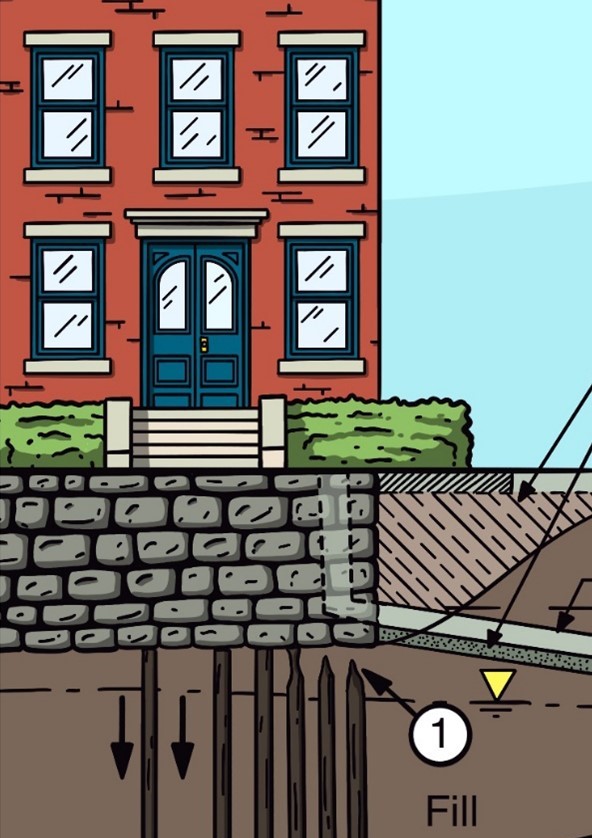Boston’s Groundwater Preservation Initiative: Groundwater Recharge System Analysis and Design

The Back Bay neighborhood in Boston, MA, has a unique history where high rises and brownstones sit in an area that was originally part of the Charles River basin. In the early 1800s, the City of Boston undertook a massive landfilling effort to create the Back Bay neighborhood using soils mostly consisting of marine silts and sand and gravel mixed with mud, trash, and other construction debris. Due to the presence of these soils, many structures built in the Back Bay in the late 19th and early 20th centuries were founded on untreated timber piles that bear in the stiffer clay soils below. For decades, the existing untreated timber piles were a popular foundation option due to material availability, the relative ease of installation, and relatively large pile capacities.
As development within the Back Bay has continued over time, groundwater levels have been negatively impacted in many locations. Specifically, urbanization, construction of impermeable surfaces, and the use of private roof and site drainage systems conveying water directly into the City’s buried infrastructure have decreased the groundwater levels in many areas of the city. The depressed groundwater levels can expose the top of the untreated timber piles to air, subjecting them to accelerated deterioration due to fungal-attack, bacterial attack, and insect infestation thereby reducing the strength of the wood and the cross-sectional area at the top of the untreated timber piles. The reduced strength of the wood and cross-sectional area decreases the load-carrying capacity of the top of the pile which ultimately can cause settlement of the structure.
In 2006, the City of Boston adopted Groundwater Conservation Overlay District (GCOD) Article 32 Zoning requirements to protect untreated timber piles from damage due to the depressed groundwater levels within portions of the city. The purpose of Article 32 is to prevent the deterioration of and, where necessary, promote the restoration of, groundwater levels in the city of Boston, protect and enhance the city’s historic neighborhoods and structures, and otherwise conserve the value of its land and buildings, reduce surface water runoff and water pollution, and maintain public safety.
This paper presents a summary of the Article 32 requirements, an overview of the roles and responsibilities for members of the design team, and a synopsis of approaches to analyze and design groundwater recharge systems.
Publisher
BSCES Civil Engineering Practice Journal